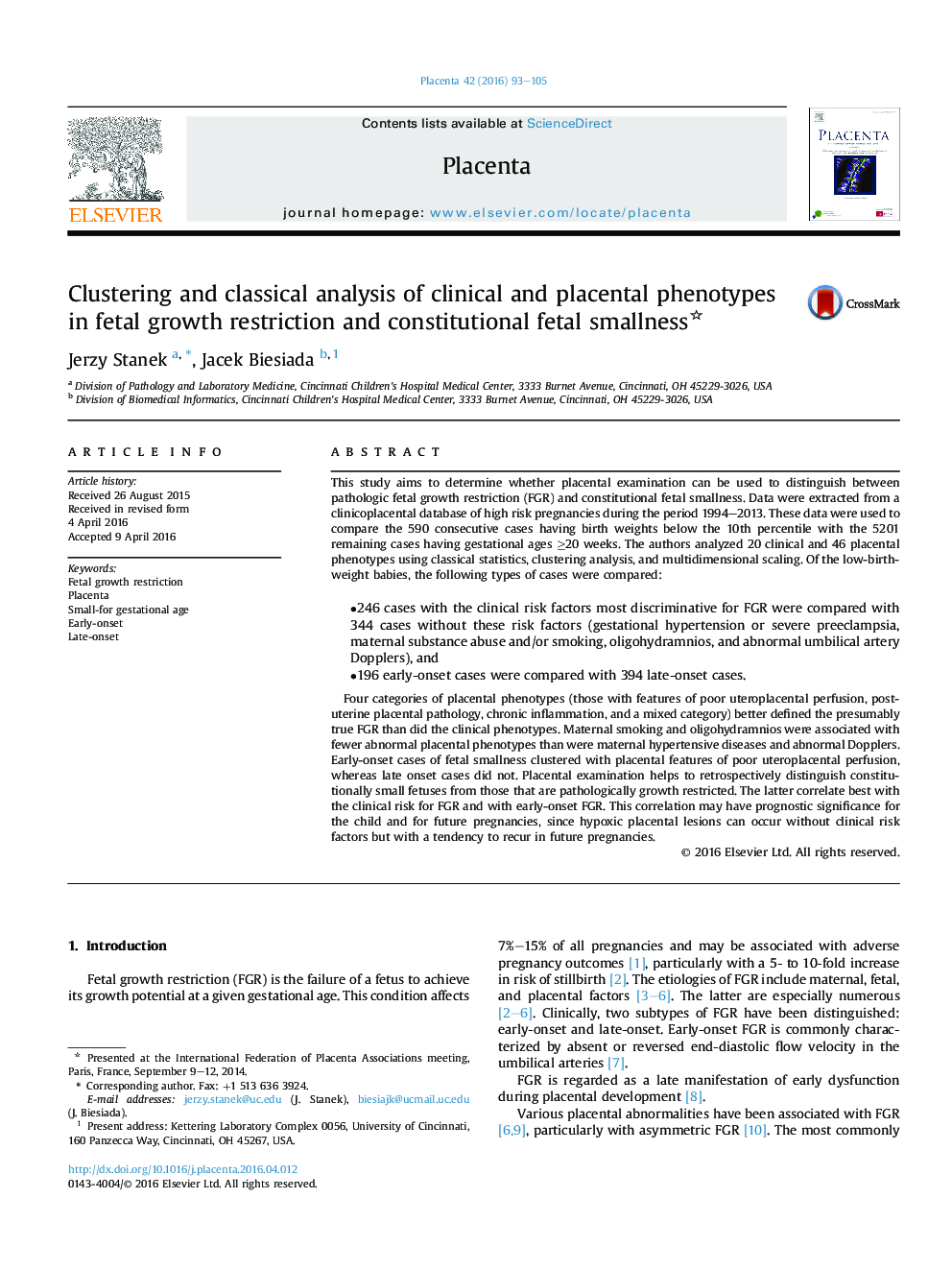| Article ID | Journal | Published Year | Pages | File Type |
|---|---|---|---|---|
| 5894335 | Placenta | 2016 | 13 Pages |
Abstract
Four categories of placental phenotypes (those with features of poor uteroplacental perfusion, postuterine placental pathology, chronic inflammation, and a mixed category) better defined the presumably true FGR than did the clinical phenotypes. Maternal smoking and oligohydramnios were associated with fewer abnormal placental phenotypes than were maternal hypertensive diseases and abnormal Dopplers. Early-onset cases of fetal smallness clustered with placental features of poor uteroplacental perfusion, whereas late onset cases did not. Placental examination helps to retrospectively distinguish constitutionally small fetuses from those that are pathologically growth restricted. The latter correlate best with the clinical risk for FGR and with early-onset FGR. This correlation may have prognostic significance for the child and for future pregnancies, since hypoxic placental lesions can occur without clinical risk factors but with a tendency to recur in future pregnancies.
Related Topics
Life Sciences
Biochemistry, Genetics and Molecular Biology
Developmental Biology
Authors
Jerzy Stanek, Jacek Biesiada,
